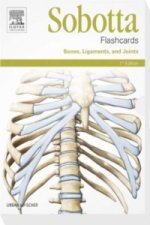
Kód: 01979264
Phosphoinositides I: Enzymes of Synthesis and Degradation
Autor Tamas Balla, Matthias Wymann, John D. York
Phosphoinositides play a major role in cellular signaling and membrane organization. During the last three decades we have learned that enzymes turning over phosphoinositides control vital physiological processes and are involved ... celý popis
- Jazyk:
 Angličtina
Angličtina - Vazba: Pevná
- Počet stran: 356
Nakladatelství: Springer, 2012
- Více informací o knize

5094 Kč

Skladem u dodavatele v malém množství
Odesíláme za 12-15 dnů
Potřebujete více kusů?Máte-li zájem o více kusů, prověřte, prosím, nejprve dostupnost titulu na naši zákaznické podpoře.
Přidat mezi přání
Mohlo by se vám také líbit
-

Numerical Solution of Elliptic Differential Equations by Reduction to the Interface
3313 Kč -

Coordination: Neural, Behavioral and Social Dynamics
3313 Kč -

Makers of Many Things
609 Kč -

Disease, Medicine and Society in England, 1550-1860
1199 Kč -

Leverage: The CEO's Guide to Corporate Culture
731 Kč -

Komplexitatstheorie
2126 Kč -

Das Potential Erneuerbarer Energien in Der Europ ischen Union
1474 Kč
Dárkový poukaz: Radost zaručena
- Darujte poukaz v libovolné hodnotě a my se postaráme o zbytek.
- Poukaz se vztahuje na celou naši nabídku.
- Elektronický poukaz vytisknete z e-mailu a můžete ihned darovat.
- Platnost poukazu je 12 měsíců od data vystavení.
Více informací o knize Phosphoinositides I: Enzymes of Synthesis and Degradation
Nákupem získáte 509 bodů
 Anotace knihy
Anotace knihy
Phosphoinositides play a major role in cellular signaling and membrane organization. During the last three decades we have learned that enzymes turning over phosphoinositides control vital physiological processes and are involved in the initiation and progression of cancer, inflammation, neurodegenerative, cardiovascular, metabolic disease and more. In two volumes, this book elucidates the crucial mechanisms that control the dynamics of phosphoinositide conversion. Starting out from phosphatidylinositol, a chain of lipid kinases collaborates to generate the oncogenic lipid phosphatidylinositol(3,4,5)-trisphosphate. For every phosphate group added, there are specific lipid kinases and phosphatases to remove it. Additionally, phospholipases can cleave off the inositol head group and generate poly-phosphoinositols, which act as soluble signals in the cytosol. Volume I untangles the web of these enzymes and their products, and relates them to function in health and disease. Phosphoinositide 3-kinases and 3-phosphatases have received a special focus in volume I, and recent therapeutic developments in human disease are presented along with a historical perspective illustrating the impressive progress in the field.Phosphoinositides play a major role in cellular signaling and membrane organization. During the last three decades we have learned that enzymes turning over phosphoinositides control vital physiological processes and are involved in the initiation and progression of cancer, inflammation, neurodegenerative, cardiovascular, metabolic disease and more. In two volumes, this book elucidates the crucial mechanisms that control the dynamics of phosphoinositide conversion. Starting out from phosphatidylinositol, a chain of lipid kinases collaborates to generate the oncogenic lipid phosphatidylinositol(3,4,5)-trisphosphate. For every phosphate group added, there are specific lipid kinases and phosphatases to remove it. Additionally, phospholipases can cleave off the inositol head group and generate poly-phosphoinositols, which act as soluble signals in the cytosol. Volume I untangles the web of these enzymes and their products, and relates them to function in health and disease. Phosphoinositide 3-kinases and 3-phosphatases have received a special focus in volume I, and recent therapeutic developments in human disease are presented along with a historical perspective illustrating the impressive progress in the field.§Volume II extends into the role of phosphoinositides in membrane organization and vesicular traffic. Endocytosis and exocytosis are modulated by phosphoinositides, which determine the fate and activity of integral membrane proteins. Phosphatidylinositol(4,5)-bisphosphate is a prominent flag in the plasma membrane, while phosphatidylinositol-3-phosphate decorates early endosomes. The Golgi apparatus is rich in phosphatidylinositol-4-phosphate, stressed cells increase phosphatidylinositol(3,5)-bisphosphate, and the nucleus has a phosphoinositide metabolism of its own. Phosphoinositide-dependent signaling cascades and the spatial organization of distinct phosphoinositide species are required in organelle function, fission and fusion, membrane channel regulation, cytoskeletal rearrangements, adhesion processes, and thus orchestrate complex cellular responses including growth, proliferation, differentiation, cell motility, and cell polarization.§The two volumes on Phosphoinositides provide a concise overview of the latest developments in the field of phosphoinositide hemostasis and function, and provide introductory background and extensions into unexplored territory.
 Parametry knihy
Parametry knihy
Zařazení knihy Knihy v angličtině Medicine Pre-clinical medicine: basic sciences Anatomy
5094 Kč
- Plný název: Phosphoinositides I: Enzymes of Synthesis and Degradation
- Autor: Tamas Balla, Matthias Wymann, John D. York
- Jazyk:
 Angličtina
Angličtina - Vazba: Pevná
- Počet stran: 356
- EAN: 9789400730113
- ISBN: 940073011X
- ID: 01979264
- Nakladatelství: Springer
- Hmotnost: 652 g
- Rozměry: 235 × 155 × 24 mm
- Datum vydání: 09. March 2012
Oblíbené z jiného soudku
-

Gray's Anatomy
868 Kč -

Complete Anatomy Coloring Book, Newly Revised and Updated Edition
276 Kč -

Women's Strength Training Anatomy
746 Kč -

Cervical Spine
1805 Kč -

Anatomy for the Artist
677 Kč -

Anatomy Trains
1966 Kč -

Netter's Anatomy Coloring Book
573 Kč -

Netter's Neuroscience Coloring Book
559 Kč -

Netter's Anatomy Flash Cards
1099 Kč -

Gray's Anatomy
444 Kč -

Pocket Atlas of Sectional Anatomy, Volume I: Head and Neck
1116 Kč -

Netter Atlas of Human Anatomy: Classic Regional Approach
2255 Kč -

Netter's Head and Neck Anatomy for Dentistry
1233 Kč -

Pocket Atlas of Sectional Anatomy, Vol. II: Thorax, Heart, Abdomen and Pelvis
1116 Kč -

Your Inner Fish
303 Kč -

Delavier's Stretching Anatomy
548 Kč -

Pocket Atlas of Human Anatomy
1009 Kč -

Atlas of Histology with Functional Correlations
1819 Kč -

Sobotta Flashcards Bones, Ligaments and Joints
499 Kč -

Anatomy & Physiology For Dummies, 3e
520 Kč -

Trigger Point Chart Set: Torso & Extremities Paper
650 Kč -

Schaum's Outline of Human Anatomy and Physiology
754 Kč -

Workbook for Sectional Anatomy for Imaging Professionals
2200 Kč -

Trail Guide to the Body
2422 Kč -

Gray's Anatomy for Students
1878 Kč -

Grays Anatomy
490 Kč -

Atlas of Anatomy for Artists
475 Kč -

Trail Guide to the Body, 6th edition - Student Workbook
1166 Kč -

Human Bone Manual
1062 Kč -

Functional Atlas of the Human Fascial System
1941 Kč -

Gray's Anatomy for Students Flash Cards
1156 Kč -

Ross & Wilson Anatomy and Physiology in Health and Illness
1124 Kč -

Sobotta Anatomy Textbook: English Edition with Latin Nomenclature
2034 Kč -

Netter's Concise Neuroanatomy Updated Edition
2093 Kč -

Muscles and Meridians
1591 Kč -

Netter's Surgical Anatomy and Approaches
4196 Kč -

Fitzgerald's Clinical Neuroanatomy and Neuroscience
1689 Kč -

Trail Guide to Movement
1478 Kč -

Ross & Wilson Anatomy and Physiology Colouring and Workbook
724 Kč -

Anatomy Coloring Book
679 Kč -

Stiff
303 Kč -

As Nature Made Him
374 Kč -

Radiographic Atlas of Skeletal Development of the Hand and Wrist
4502 Kč -

Abrahams' and McMinn's Clinical Atlas of Human Anatomy
2444 Kč -

Netter's Advanced Head and Neck Flash Cards
1059 Kč -

Essential Ultrasound Anatomy
1287 Kč -

Anatomy Coloring Workbook, 4th Edition
528 Kč -

Netter's Essential Histology
1954 Kč -

Diagnostic Pathology: Cytopathology
7114 Kč
Osobní odběr Praha, Brno a 12903 dalších
Copyright ©2008-24 nejlevnejsi-knihy.cz Všechna práva vyhrazenaSoukromíCookies


 Vrácení do měsíce
Vrácení do měsíce 571 999 099 (8-15.30h)
571 999 099 (8-15.30h)